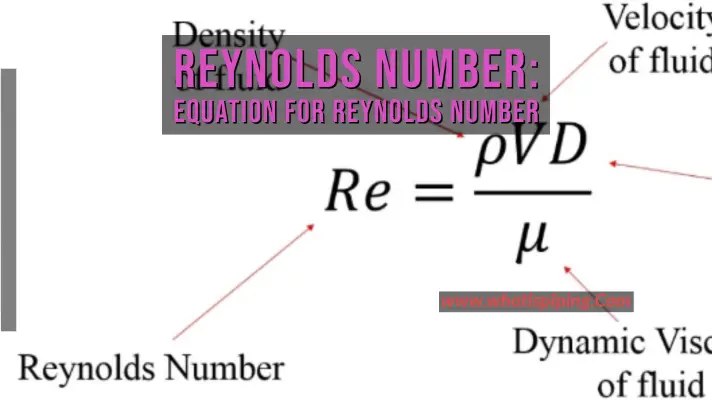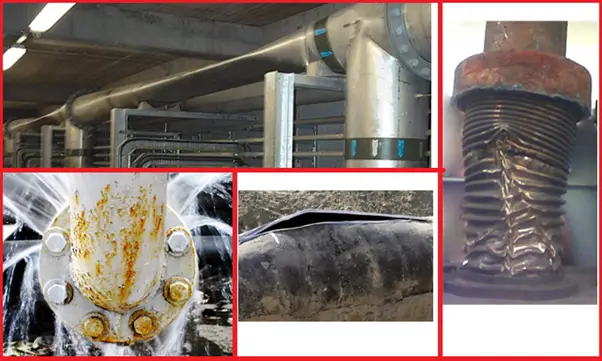The term Mach Number is very important in fluid mechanics and process engineering. Mach number is widely used for speed comparison purposes with respect to the speed of sound. It is a very important parameter in fluid dynamics study. Mach number is also used to determine the compressibility of a fluid. In this article, we will learn more about Mach Number, Its importance, and equations.
What is Mach Number?
The Mach number is defined as the velocity of an object in a medium divided by the sound velocity in that medium. It is a dimensionless number used to compare the velocity of an object to the speed of sound. Mach numbers are commonly represented by the symbol “M”.
Mach number (M) = [object velocity(u)] / [sound velocity(c)]
Mach numbers are dimensionless because they are defined as the ratio of two velocities. If the flow is quasi-steady and isothermal with M <0.2–0.3, the compressibility effect is small and the fluid can be treated as incompressible.
The Mach number is named after the Austrian philosopher and physicist Ernst Mach. Because this is a dimensionless quantity and not a measurable unit, the number is placed after the term Mach, such as Mach 4 instead of 4 Mach.
What is the Mach number used for?
Mach number is used to determine whether a flow is incompressible or compressible. The medium can be gaseous or liquid. There are many other applications of Mach number as listed below:
- Speed or Velocity comparison
- To find out the sonic condition of fluid while determining the probability of acoustic-induced vibration.
- While studying the motion of rockets and planes, the Mach number is a very important parameter.
- Mach number is an important parameter for studying choked flow and flow through nozzles.
- The study of shock waves is also dependent on Mach Number.
Compressibility and Mach number
Compression and expansion are important properties of fluids. Fluids can be liquids or gases. A fluid is said to be compressible if compression and expansion have a large effect on the density (kg/m3) of the fluid. On the other hand, if compression and expansion do not significantly affect the density of the fluid, the fluid is said to be incompressible. The volume of an incompressible liquid does not change with changes in pressure or temperature, and the density is treated as constant. Liquids are always considered incompressible because their density changes less with pressure and temperature. Strictly speaking, no perfectly incompressible fluid exists. However, if the density change with pressure or temperature is small, approximating the fluid as incompressible simplifies the calculations considerably.
Fluids (air/gas) behave similarly under the influence of compression ratio at a particular Mach number, independent of other variables. The speed of sound is 340.3 m / s (1,116.5 ft / s; 761.23 mph), as modeled at the International Standard Atmosphere, dry air above sea level, and standard temperatures of 15 ° C (59 ° F). The speed of sound is not constant. In gas, the temperature rises in proportion to the square root of the absolute temperature, and as the altitude rises to 11,000 meters (36,089 feet) above sea level, the temperature generally drops, so the speed of sound also drops. For example, the standard atmospheric model reduces the temperature to -56.5 ° C (-69.7 ° F) at an altitude of 11,000 meters (36,089 feet) and the corresponding speed of sound (Mach 1) is 295.0 meters / second (967.8 feet/second). 659.9 mph), 86.7% of sea level.
Sonic Velocity
As the pressure at a point is increased the adjacent molecules undergo a small change in position. If the fluid is incompressible then the motion is infinitely quick. Most fluids are, to some degree compressible, therefore this time is finite. If there is a sudden change, or the fluid is moving quickly then this time is important.
For a thermally perfect gas the relationship is:
c=√(γRT)
We can express the velocity of gas (u) as a function of the sonic velocity
M= u/c
- Where M is the Mach Number;
- When M < 1 Subsonic
- M = 1 Sonic
- M > 1 Supersonic
- c = Sonic velocity (m/s)
- γ = Specific heat ratio
- R = Specific gas constant ( J / mol . K)
- T = Temperature of the fluid (K)
Formula for Mach Number
As already stated above, the equation for Mach number is given by
Mach Number, M=u/c
Where Mach number is M. Based on the limit values, the local flow velocity is u and the speed of sound in this medium is c.
It can be said that the speed of sound corresponds to the speed of Mach 1. Thus Mach 0.75 is 75% of the speed of sound, also known as subsonic, and Mach 1.65 is 65% faster than the speed of light, also known as supersonic.
The Mach number due to the local speed of sound depends on the surrounding medium at a given temperature and pressure. This flow can be determined as an incompressible flow using the Mach number. The medium can be either liquid or gas. The medium can flow while the boundary is stable, or the boundary can move in a stationary medium. Both the medium and the boundary can move at a certain speed, but the speed of each other is important. Media can be passed through multiple devices such as wind tunnels or submerged in media. The Mach number is called a dimensionless number because it represents the ratio of two velocities.
Classification and Importance of Mach Number
Using Mach numbers, compressible flows can be nominally categorized as:
[1] Incompressible flow: M = 0. The liquid density does not change with the pressure of the flow field. The flowing fluid can be a compressible gas, but its density can be considered constant.
[2] Subsonic flow: 0 <M<1. Mach numbers do not exceed 1 anywhere in the flow field. No shock wave is generated in the flow. In engineering practice, subsonic flows with M <0.3 are often treated as incompressible.
[3] Transonic flow: The Mach number of the flow is in the range of 0.8 to 1.2. A shock wave may be generated. The analysis of transonic currents is difficult because the governing equations are non-linear and it is often impossible to separate the non-viscous and viscous aspects of the flow.
[4] Supersonic flow: M> 1. Shock waves are common. In many respects, analyzing a flow that is supersonic everywhere is easier than analyzing a subsonic or incompressible flow. This is because the information propagates along specific directions called properties, and determining these directions greatly simplifies the calculation of the flow field.
[5] Hypersonic flow: M> 3. Very high flow velocities combined with friction or shock waves can result in sufficiently large temperature rises in the liquid due to molecular dissociation and other chemical effects.
Mach Number and Flow Through Nozzles
For flow through nozzles and diffusers, the governing equation is:
(M2-1) * [∂( u)/u] =[∂(A)/A]
- If we assume that the flow is subsonic (M < 1) then M2 – 1 < 0
- Therefore ∂ (A) and ∂ (u) are opposite signs
- In other words, as ∂ (A) increases then ∂ (u) decreases
- If we assume that the flow is supersonic (M > 1) then M2 – 1 > 0
- Therefore ∂ (A) and ∂ (u) are the same sign
- In other words as ∂ (A) increases then ∂ (u) increases
- For M = 1 then ∂ (A) must be zero. The second derivative of this is positive therefore A is minimum.
- In other words, if the flow is sonic it must be sonic at the throat
Frequently Asked Questions related to Mach Numbers
1. What’s the highest Mach speed?
The Guinness World Records awarded NASA’s X-43A Scramjet a new world speed record for jet-engine aircraft, Mach 9.6, or about 7,000 miles per hour. The X-43A set new standards and set its own world record on its third and final flight on November 16, 2004.
2. Does pressure affect Mach Number?
As the Mach number increases, so does the intensity of the shock wave, and the Mach cone becomes narrower and narrower. As the fluid flow crosses the shock wave, it slows down and increases in temperature, pressure, and density.
3. Does temperature affect Mach Number?
The warmer the air, the lower the density, the slower the speed of sound, and the faster the speed on the ground to achieve the same Mach number.
4. Can anything go Mach 10?
On November 16, 2004, NASA made history by launching the first-ever air-breathing hypersonic aircraft, the X-43A, into the atmosphere and reaching Mach 10 speeds. Separated from the booster, the X-43A used scramjet propulsion to accelerate to about 110,000 feet at nearly 10 times the speed of sound (7000 MPH).
5. Is hypersonic faster than supersonic?
Supersonic is the speed of Mach 1, and hypersonic is the speed of Mach 5. Supersonic speeds are faster than the speed of sound, while hypersonic speeds are five times the speed of sound. The Concorde is the only supersonic airliner, but there is no such thing as a hypersonic airliner.
6. What Mach is supersonic?
Supersonic is the speed of an object that exceeds the speed of sound (Mach 1). For objects moving in dry air at a temperature of 20 ° C (68 ° F) above sea level, this velocity is approximately 343.2 m / s (1,126 ft / s; 768 mph; 1,236 km / H).
7. Which Mach number is considered the beginning of compressibility?
Gas is considered compressible only if its Mach number is greater than 0.3. Therefore, if the Mach number is less than 0.3, the change in liquid density is not significant and the gas is considered incompressible.
8. Which Mach number is less than 1 flow?
If the Mach number is less than 1 and M <1, a subsonic condition occurs. For the lowest subsonic conditions, the compression ratio is negligible. As the speed of the object approaches the speed of sound, the flight Mach number becomes approximately equal to 1 and M = 1, and the flow is said to be transonic.
9. Why is Mach number important in a compressible flow?
If the Mach number is very high, the fluid is considered compressible, and if the Mach number is low, the volume remains constant as the pressure changes and the flow becomes incompressible. If the Mach number is less than 0.3, the mechanical approach is incompressible flow.
10. At what speed does air become compressible?
At velocities below 100 m / s, the air is treated as an incompressible fluid, and at velocities above 100 m / s, the air is treated as a compressible fluid.
11. What are compressible and incompressible flows?
The difference between compressible and incompressible flows in fluid mechanics is conceptually simple. Compressible fluids can experience changes in density during flow, but incompressible fluids do not.

12. What altitude do you switch from airspeed to Mach?
When flying with an autopilot over approximately 20,000 feet, the pilot switches from the airspeed indicator to the Mach (sound velocity) indicator because the airspeed readings are high altitude and inaccurate.
13. What happens when an Aeroplane climbs at a constant Mach number?
Atmospheric pressure, density, and temperature decrease with altitude, so when flying a constant Mach number, the aircraft actually constantly accelerates or decelerates to the air mass and constantly rises or falls.
14. Does Mach number increase or decrease with altitude?
Since the speed of sound increases with temperature and the temperature generally decreases with altitude, the true airspeed for a particular Mach number generally decreases with altitude.

15. Why is the Mach number used at high altitudes?
Mach number is defined as the speed ratio associated with the speed of sound. In other words, as the temperature and density of air decrease with altitude, so does the speed of sound. Therefore, certain true velocities result in higher altitudes and higher Mach numbers.








